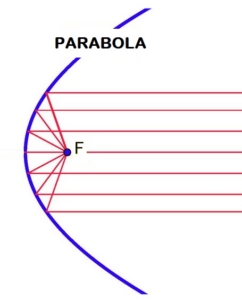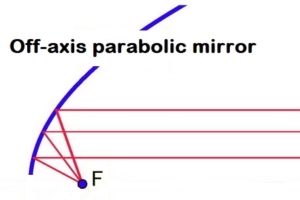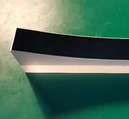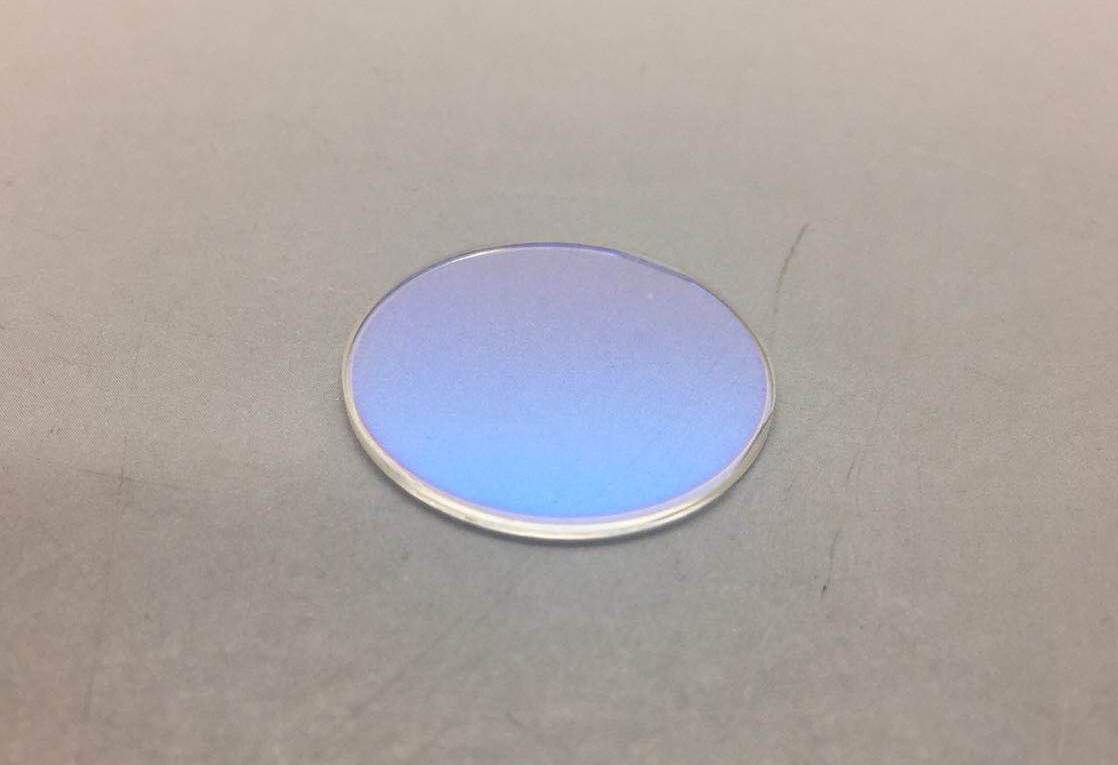Parabolic mirror : a complete guide
When we speak of parabola the first thing that come to our mind is the “dish” seen everywhere on houses roof to connect to satellite TV. In Optics, parabolic components are also used almost in the same way to collect other type of radiations from the optical spectrum. In below guide you’ll learn everything you need to know on parabolic mirrors.
Definition of a parabolic mirror
A parabolic mirror is a mirror which the shape of its optical surface is defined by a parabolic function. They are almost always concave and used for either focusing collimated light or collimate a light source output beams (also called reflectors or collimators). Parabolic mirrors can be provided with a through hole at their center which can be used for reference or introducing a light source.

Light beams in red focusing in F inside a parabolic mirror in blue
Off-axis parabolic mirror
Off-axis parabolic mirrors (OAP) are a cross section of a parent parabola cut along the symmetric axis in order to loose the symmetry and that the focusing point can be reach easily outside the optical element (see below illustration). Off-axis mirrors should be used within a specific angle range that is specified by manufacturer otherwise focusing will not react as expected.

Off-axis parabolic mirror (in blue) and the focusing of collimated light beam (in red)

Example of an off-axis parabolic mirror
There are different kinds of substrates that can be used for off-axis parabolic mirrors :
- Optical glass OAP (usually H-K9L)
- Ceramics OPA (Zerodur)
- Metal OAP (Aluminium 6061-T6)
Why using them ?
There is two main advantages
- Compared to spherical mirrors they avoid spherical aberrations.
- As it is a mirror focusing is achromatic and therefore offers better image quality than spherical lens.
Usual coatings are gold, silver or aluminium, but dielectric coating is also available for narrower working spectrum, for example in laser applications.
Parabolic mirrors are common in Astronomy, lasers, microscopy, lighting and spectroscopy. They are used with visible light but also on UV and IR spectrum.
Where to buy parabolic mirrors ?
Due to their shape complexity parabolic mirrors cannot be found in every precision optics manufacturer, supplier should be able to machine complex shape either by CNC or Diamond head turning.
Don’t hesitate to contact SINOPTIX for your parabolic mirror requests.







